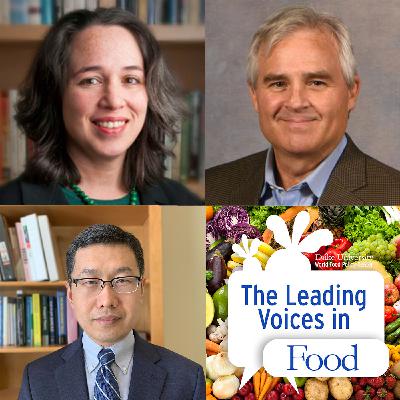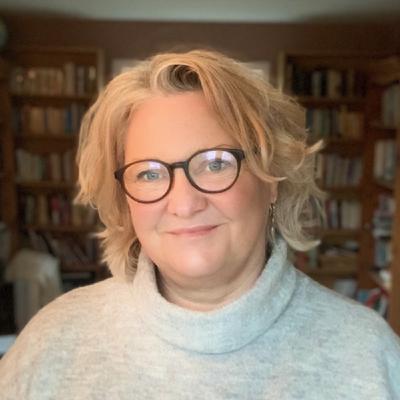E263: Explore the Daily Table non profit grocery store model
Description
Today, we're going to explore Daily Table, an innovative non profit grocery chain dedicated to providing fresh, convenient, and nutritious food affordable to everyone, even those on the Supplemental Nutrition Assistance Program, or SNAP. In today's economic climate, where rising food prices are impacting households across the country, the concept of a non profit grocery store seems to fill a real need. Our guest today is Daily Table CEO, Sasha Purpura, a software engineer who spent 15 years in the tech industry and product management and development roles.
Interview Summary
Sasha, it is such a pleasure to connect with you. I'm intrigued to hear more about where Daily Table is today because I too was a Daily Table shopper. So, let's begin just hearing about what Daily Table is and what's the driving mission of the organization.
Absolutely, Norbert. Simply what's driving the organization is the belief that everybody deserves access to healthy food. Daily Table is such a simple solution, but so incredibly innovative. It's a grocery store where everybody can afford healthy food. To me, seems like that should be there already. Unfortunately, it isn't.
Historically, the way we have addressed hunger in this country is food pantries. And food pantries play a critical role and they're very necessary. However, there's spaces designed for people with low income. To say you're low income, you can't afford food, come here. And we know that 40 percent of the people that qualify for food pantries won't go to a food pantry because of that stigma. And because they want agency. They want the dignity of providing for their families and choosing what they want to eat. So Daily Table creates that shopping experience.
People who don't use food pantries, they shop for themselves. And the sad reality is they have not been able to choose healthy food every day. They can't. It is not affordable. If you are lower on the income scale, you cannot afford to put fruits and vegetables on your table every day. Daily Table makes it possible for every person to afford to put fruits and vegetables on their table every day.
And we are a normal grocery store. Anybody can come in there. We welcome everyone. It is not set up for people with a low income. It is a shopping experience. It is bright and colorful. It is dignified, enjoyable. Let's go look at all this beautiful produce. Daily Table dedicates a third of its footprint in each store to produce. Think about any grocery store you go into. That is not the case. We are focused on healthy, beautiful, fresh food. So, it's produce. It's proteins.
And then finally, we have a commissary kitchen in our Dorchester store. It serves all of our stores, and we make healthy meals. A lot of people working two jobs cannot cook for themselves. Don't have the resources. And unfortunately, in many cases, turn to fast food, which isn't even that affordable these days. We make a chicken meal with a big chicken leg and 2 sides starting at $2.99. We have a large garden salad for $2.99. We have smoothies. We have soups that aren't extremely high in sodium. So, we provide healthy, tasty, prepared meals alongside fresh produce.
If you can cook it, it's the ingredients are there. If you can't cook it, we cook it for you. And so Daily Table, our mission and what we do every day, is ensure that healthy food is truly affordable to everybody.
This is really a useful way of hearing about what Daily Table is. As someone who used to live in Boston, I would visit the Dorchester store. And I remember all they asked is to tell us what zip code you're from and we would go shopping.
We don't even ask that anymore.
Oh, you don't even ask that anymore! That is awesome. And, you know, what's great it was easy to take my very young daughter at that time into the store and feel good about what we were getting. And my wife was like, can you believe these prices?
In a good way!
In a very good way. And so, it was always a positive experience. And it was great to know that there were people in that local community that were in the store. That were part of the staff. And it was a great place to visit. So, I'm glad to be able to connect with you on this. But I got to ask this question, how did a software engineer all of a sudden end up in a nonprofit grocery store? What happened? What drew you to this work?
Well, it wasn't all of a sudden, but it was definitely a path. I met my husband when we were working at Nokia. I was in product management at the time. And in 2005, he quit to start an organic farm. A dream he'd always had. Went to it full time, that's how he makes his living. And he'd always had a big garden and just been a food person and I learned through him. I'd work with him on the weekends and getting the farm started and go to farmer's markets with him. And I, I discovered food in a way I'd never really understood it. I fell in love with it. I fell in love with the way that food creates community. I mean, it is the center of community. It's how we show love. It's how we come together over holidays. But to work with my husband creating this really beautiful produce, healthy, and to share that and just, just at a farmer's market, see how people come together that don't know each other. And 'how do you use collard greens? Or what is this vegetable?' It was just life. It was just life and I wanted that. So, I quit in 2009. I worked with him on the farm for a couple of years while I went back to school just to expand my network and nonprofit and other things. And in 2012, I began as an executive director of another hunger relief organization. And what was amazing, what is amazing to me, whether it's at a food pantry or Daily Table or a farmer's market, it is the same experience. It is people coming together around food and sharing. And it is beautiful and it, it creates healthy communities. It's not just nourishing us physically, but that's critical. By the way, healthy food is the cheapest form of healthcare. If we would just invest in that. But it also nourishes a community. It's mental health. It's sitting around the table with your family. It's cooking. It's not being hungry. And so, to go from the one extreme of a local organic farm in a farmer's market that isn't cheap. You know, my husband isn't making money off of it. He's not getting rich, but the food, it takes a lot to grow food.
So, to go from that experience and bringing together people who can afford farmer's market prices and seeing that same experience in a food pantry or at Daily Table, it is, it's about food. It's not about money and it should be accessible to all. It is really amazing. I loved the two years on the farm and bringing access to local food to people. And to now do that to folks who otherwise simply couldn't get access to healthy food. It's, it's just an incredible honor to be a part of that.
Thank you for sharing that. And thank you for sharing part of your story. I'm interested to go back to Daily Table and understand how is it different than other nonprofit organizations, especially in the food justice space? Help us to appreciate that you gave us a bit of an idea when you were talking about comparing it to food pantries. But I'd like to hear sort of more of your thoughts on that.
Well, my thoughts are not so much are how are we different, but how do we fit into the emergency food system? One of the beautiful things... I'm in Cambridge, Massachusetts, Daily Table is at Cambridge and Boston and Salem. And I've worked now for 12 years in this field in Northeastern United States, Massachusetts. And what I've discovered is there is a network of food justice, hunger relief organizations. And we are an incredibly large community of people that care about the same thing and working together. So, we need a lot of different solutions. SNAP, as you mentioned, the supplemental nutrition access program, that is hunger relief, right? That lets people have access to purchasing food. Then there's Daily Table where you can use your SNAP benefits to buy produce. To buy very healthy food at very low prices. Then there's a food pantry for people that perhaps don't even have access to SNAP. They can go to a food pantry and
























